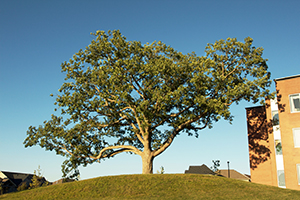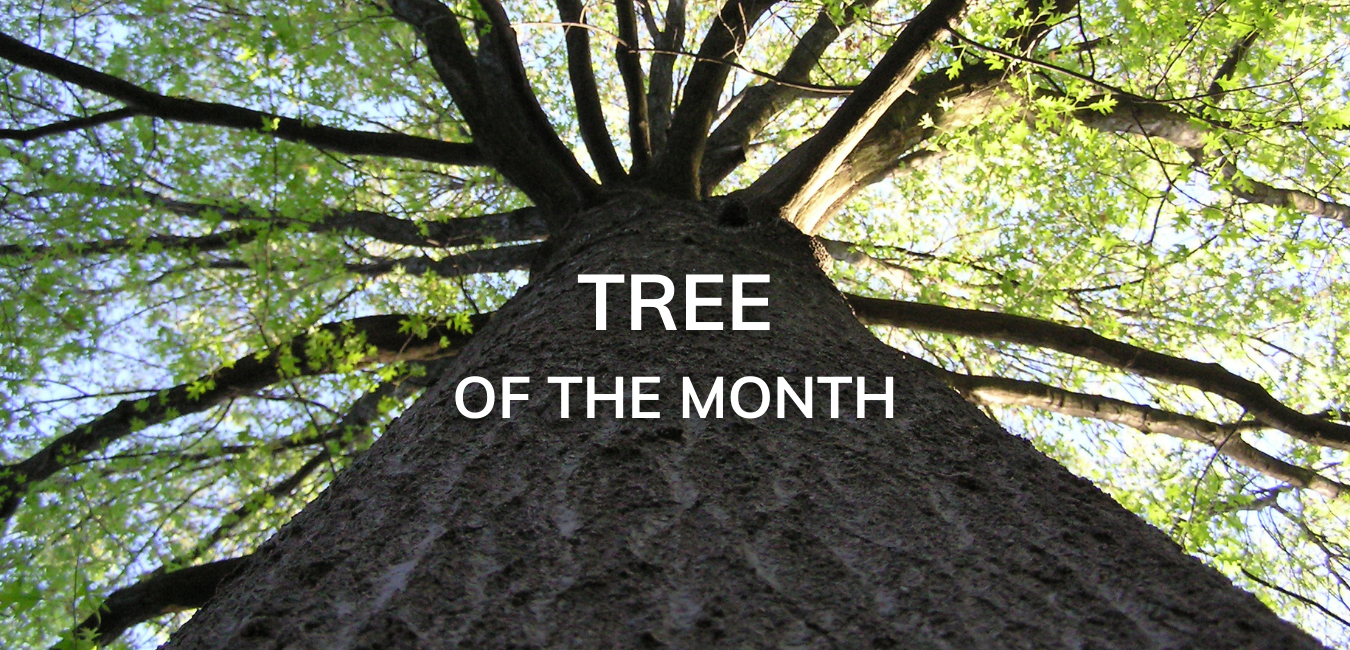
Widespread throughout Eastern North America, the White Oak is an impressive tree when allowed to grow in large open spaces. The tree is not normally very tall, usually growing to 19-25 metres (65-85 ft); however, its large branches that often grow parallel to the ground allow this tree to sometimes be as broad as it is tall. The White Oak can live to be 200 to 300 years old, or even longer.
The Wye Oak in Wye Mills, Maryland, was believed to be the oldest living White Oak until its destruction during a thunderstorm in 2002. It was estimated to be 430 years old!
In 2010, a White Oak tree on the grounds of the Dearness Home won in the Greatest Survivor category. Read the fascinating story.
Contrary to its name, the White Oak is most commonly seen to have an ashen-gray shade of bark. A White Oak with white bark is quite uncommon! The bark of this tree is easy to identify by its scaly overlapping patches. The leaves have 7 to 9 rounded lobes and are typically a yellow-green colour, turning purple-red in the fall. The White is not suited as a street tree, as it is intolerant of road salt and it has a large, deep network of roots, but it makes a great backyard tree.
The acorns from this tree were used as food for many Aboriginal groups in the past, and are frequently eaten by wildlife, including turkeys, rabbits, deer, and blue jays.
Want to plant one?
The White Oak grows best if planted in an open area, though it can grow in forests as well. This tree is tolerant of almost all moisture levels except for extremely dry areas, though it prefers moist areas, and it grows best when planted in acidic soil.


